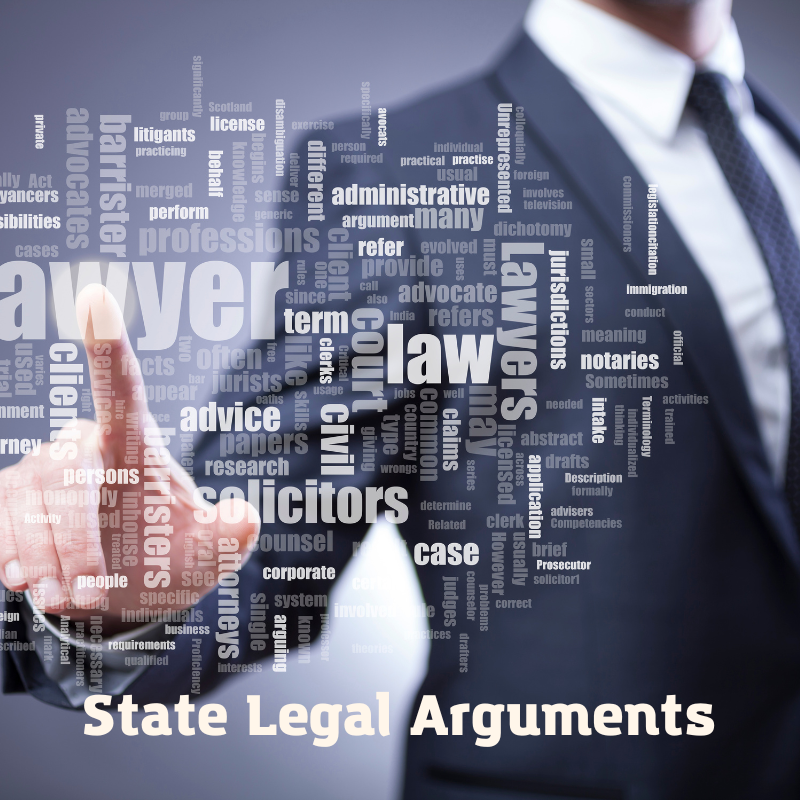Matthew Hoover’s Motion for Acquittal
B.L.U.F.Matthew Hoover and Kristopher Ervin thumbed their noses at the ATF, daring the ATF to do something. The ATF did, they arrested both of them for multiple counts of conspiracy to sell a “combination of parts” that would convert a gun into a machine gun. Both were found Guilty. They have not been sentenced yet. Having been found guilty, both are asking for the court to acquit them.
Hard cases make good law. There is so much tied up in this case that it is hard to dissect. This might be such a case.
History
Matthew Hoover was a YouTuber who created gun content. I had watched some of his videos, but his content wasn’t of significant interest to me. His content would be recommended to me from time to time. At some point, he started advertising the “Auto Key Card” and it was obvious that he was selling this card.
The “Auto Key Card” was a dimensionally correct etching on a stainless-steel card of a “lighting link.” A lighting link can convert an AR-15 style platform from semi-automatic to full-automatic, i.e. a machine gun.
But what does it do? It is both complicated and simple at the same time.

On the AR-15 platform, when you have charged the rifle, you have cocked the internal hammer. The hammer has a small notch in it called a sear.
When you press the trigger, the arm in front of the trigger rotates down. As it does, it clears the sear on the hammer. The hammer then moves forward to hit the firing pin and fire the weapon.
The bullet flies down the barrel, as it passes the gas port some of the gas is diverted into the gas tube. That gas flows back towards the receiver, where it acts on the bolt carrier to shove the bolt carrier towards the rear of the gun. The bolt carrier pulls the bolt out of the chamber. It also pushes the hammer back down.
This happens so fast that you do not have time to release the trigger. As the bolt carrier is shoved forward by the recoil spring, the hammer rides down the back of the bolt carrier and may or may not drive the firing pin into the next round, firing git.
The disconnector interrupts this process. The hook at the front of the disconnector catches the hook on the back inside the hammer and keeps the hammer from following the bolt forward.
When the trigger is released, the nose comes up and is ready to catch the hammer. As the trigger is released more, the disconnector is pulled back out of the hook on the hammer and the hammer starts forward, only to be stopped as the sear catches on the nose of the trigger.
We are now ready for the next trigger press.
In a full auto AR-15 platform, we add one more piece and modify some of the other pieces. The first piece of interest is the selector switch. This will push down on the back of the disconnector, so its hook will never catch the hammer hook. If this was all that was happening, the hammer would ride the bolt carrier back down and the firearm might slam fire. But this is not controlled and might not actually happen.
What we want to have happen is for the hammer to stay back until the bolt is in battery and then for the hammer to fall, picking up speed, until it strikes the back of the firing pin. This is where the auto sear comes into play.
When the bolt carrier to the rear, the hammer is down and the auto sear is rotated such that it catches the hook on the back of the hammer. This holds the hammer down as the bolt carrier moves forward, driving the bolt into battery. As this happens, the back of the bolt carrier catches the rear of the auto sear and rotates it. This releases the hammer, allowing the gun to fire a second time.
The thing that makes an AR-15 receiver a “machine gun” is the little hole for the auto sear pivot pin. Without that hole and the auto sear, it is not a machine gun.
Before 1986, people were manufacturing “drop in auto sear” This was a block of milled steel with the auto sear and pivot pin integral to the unit. When put into a receiver with a correctly milled shelf for the auto sear and when the rest of the fire control group had the right type of disconnector, trigger, selector switch, and hammer, the drop in auto sear worked just like a normal auto sear.
If that little chuck of metal was properly serialized and registered before 1986, it is legally a machine gun. They sell for thousands of dollars.
A cheap version of the drop in auto sear was the “lighting link”. This was a much simpler device made from a couple of pieces of thin stamped metal. It performed the same function. Unfortunately, it wasn’t very reliable. They had to be carefully tuned to fit a particular receiver and even then, it couldn’t be trusted the same way a real M-16 and drop in auto-sears could.
Dimensional draws of the lighting link are available on the internet and in some old tyme books.
All of this brings us back to the Auto Key Card. The Auto Key Card is a dimensional drawing of a lighting link. The card is made from stainless-steel and is laser etched. That is all it is.




